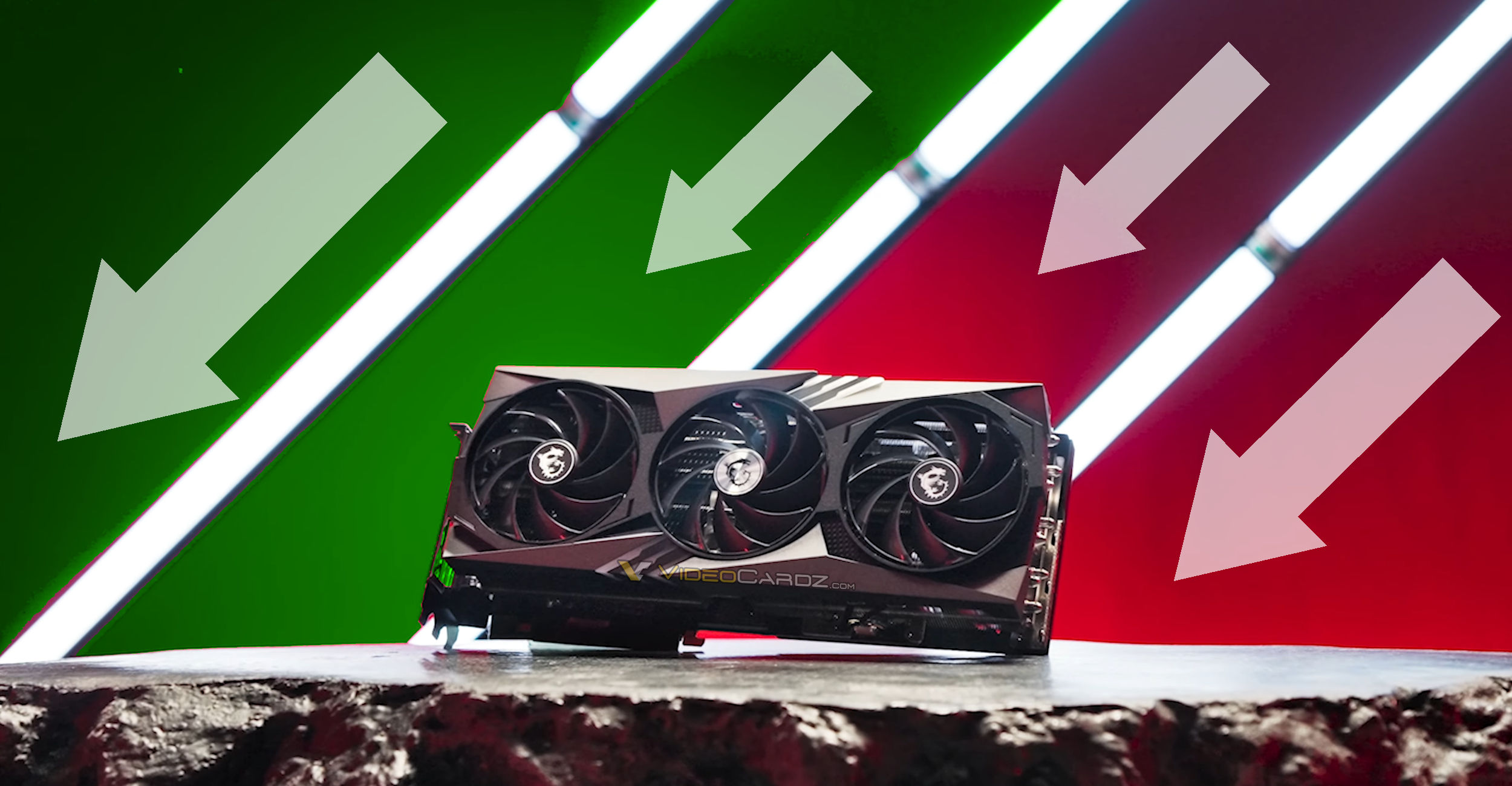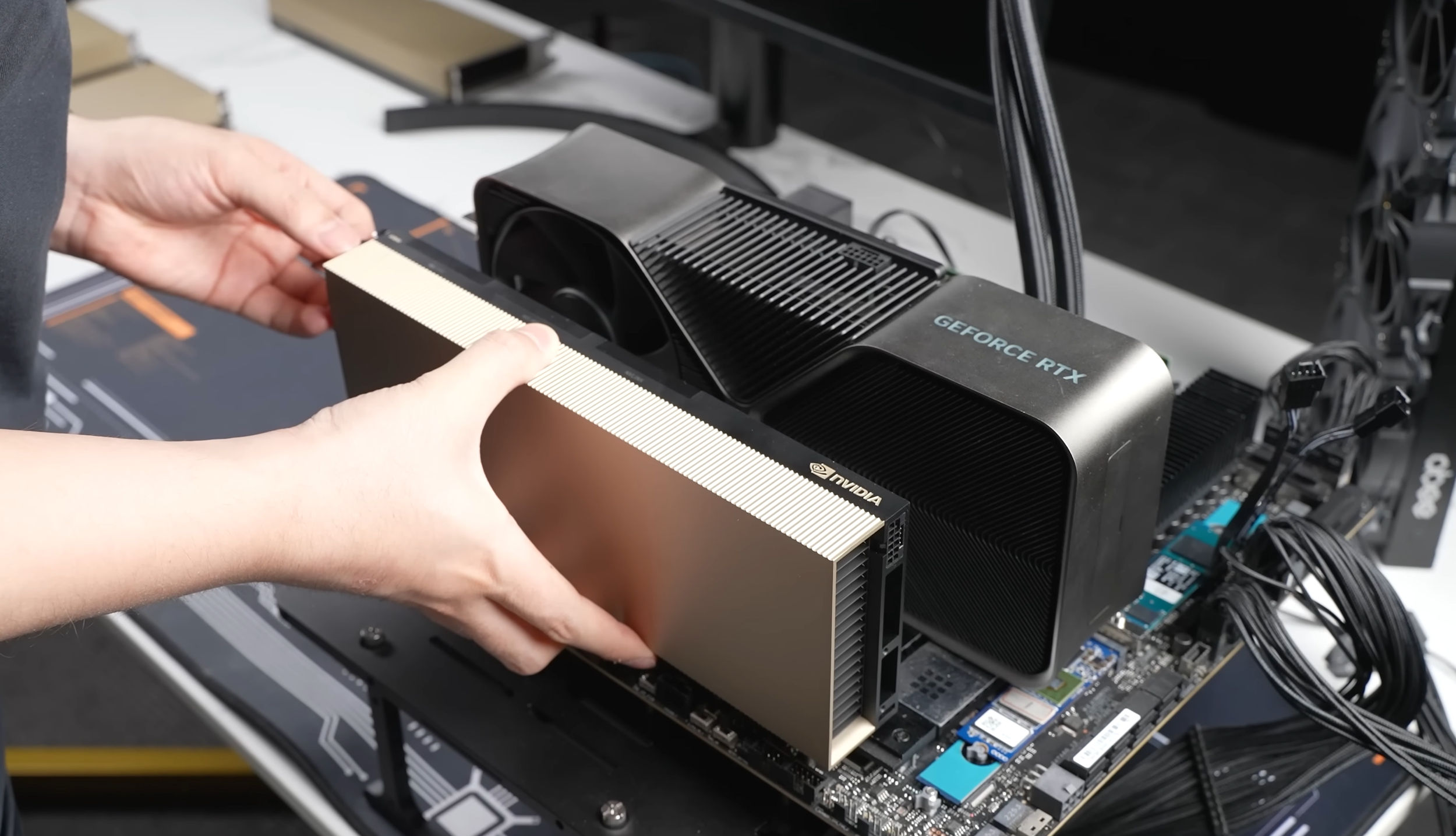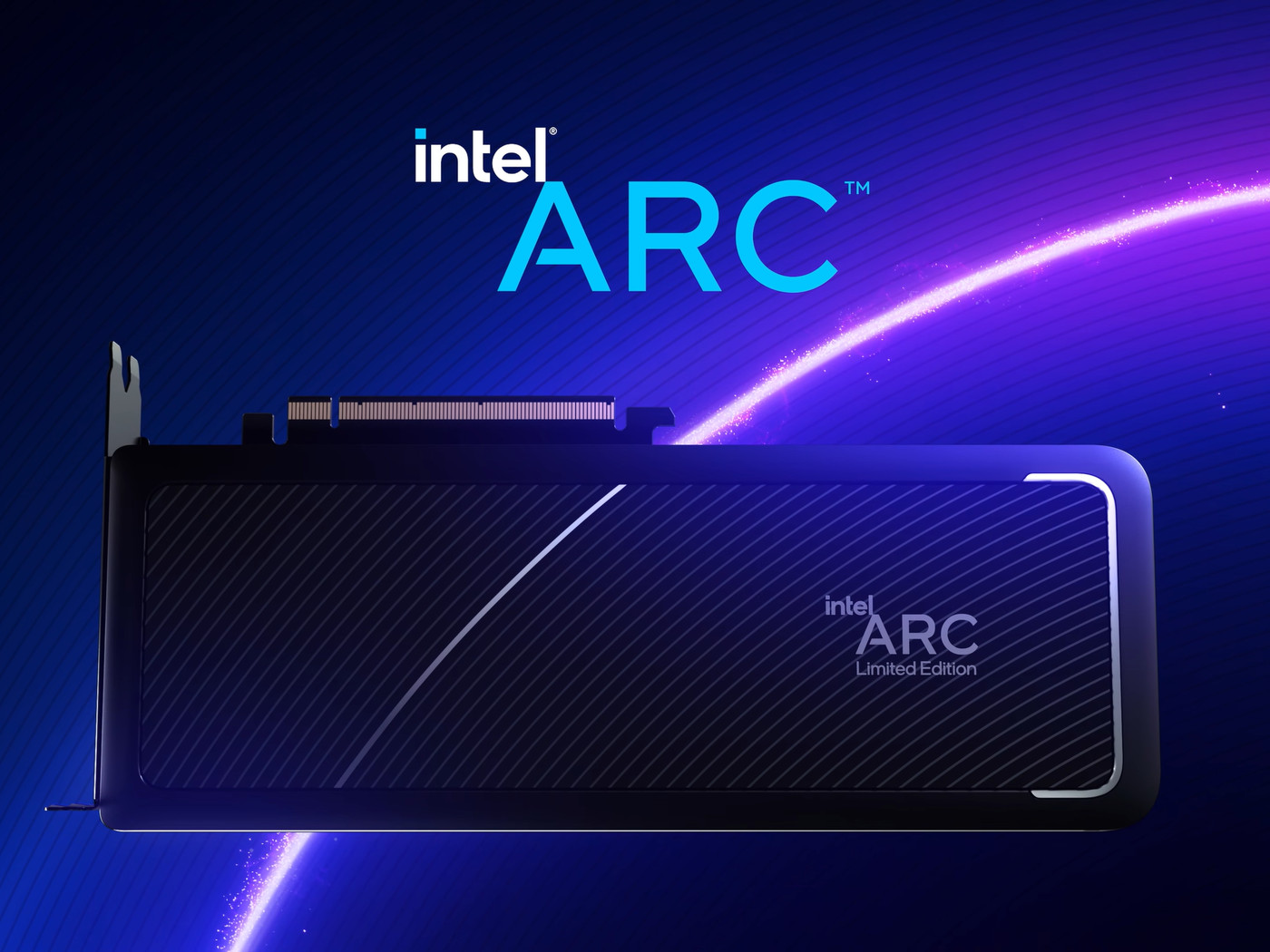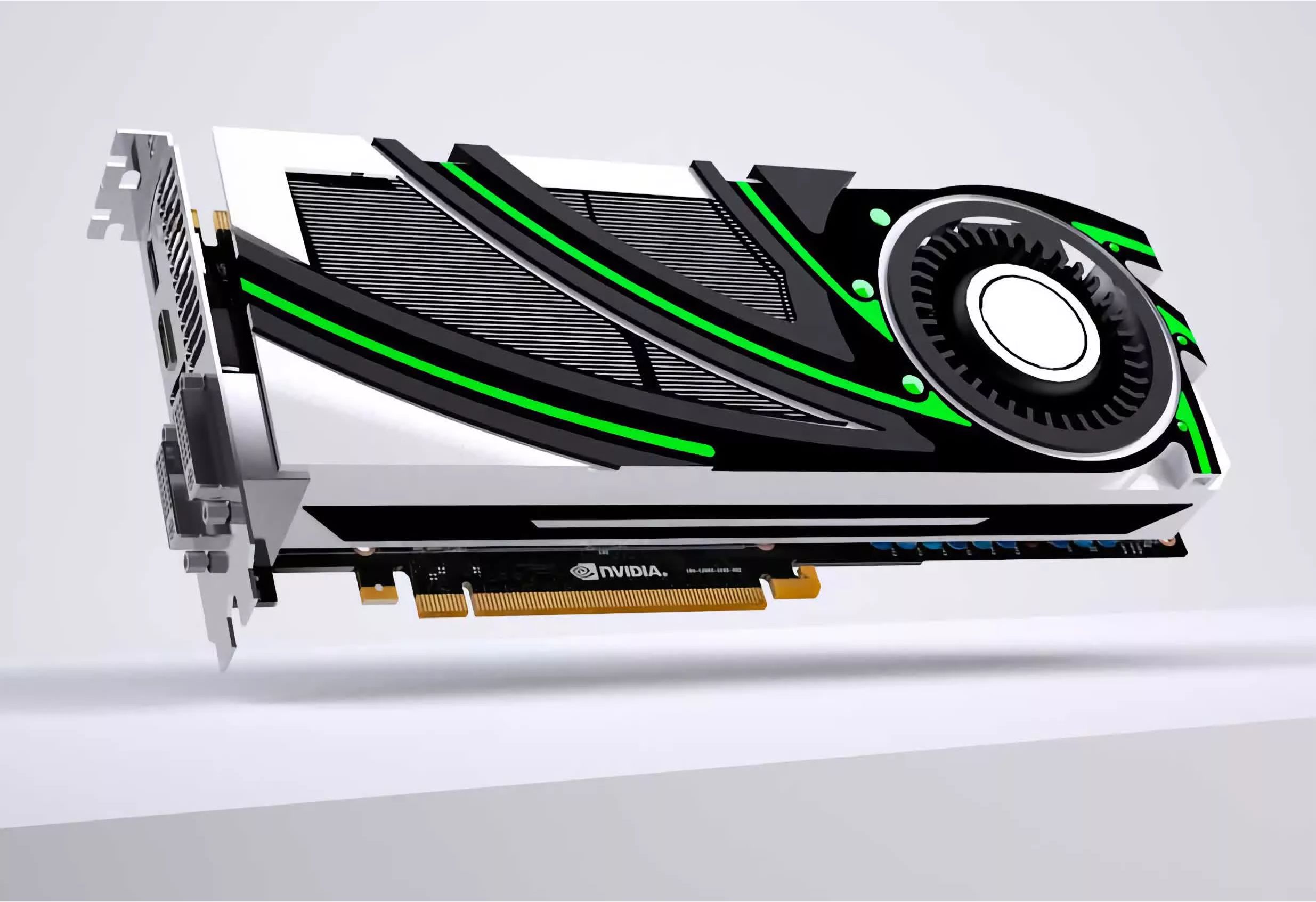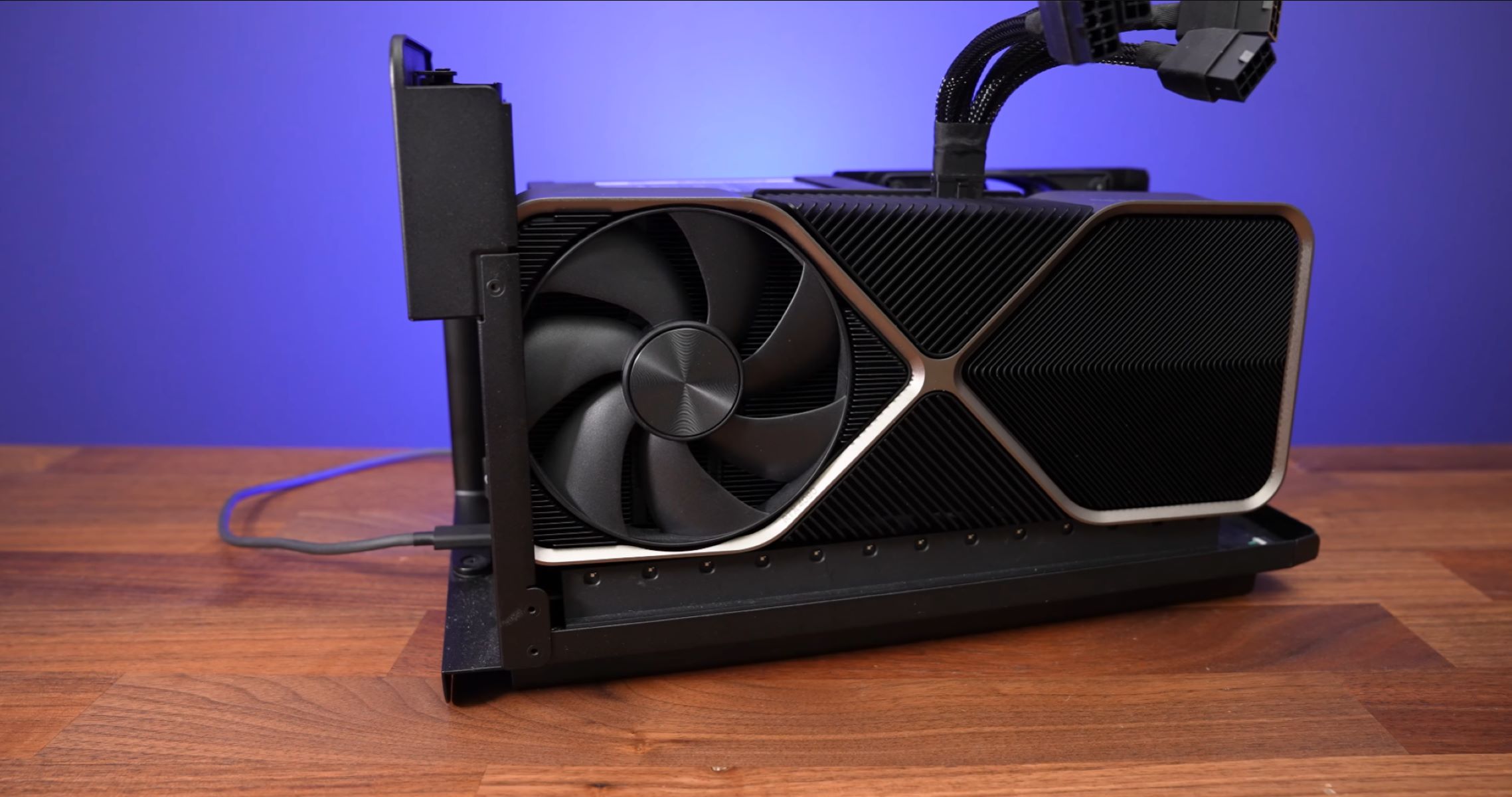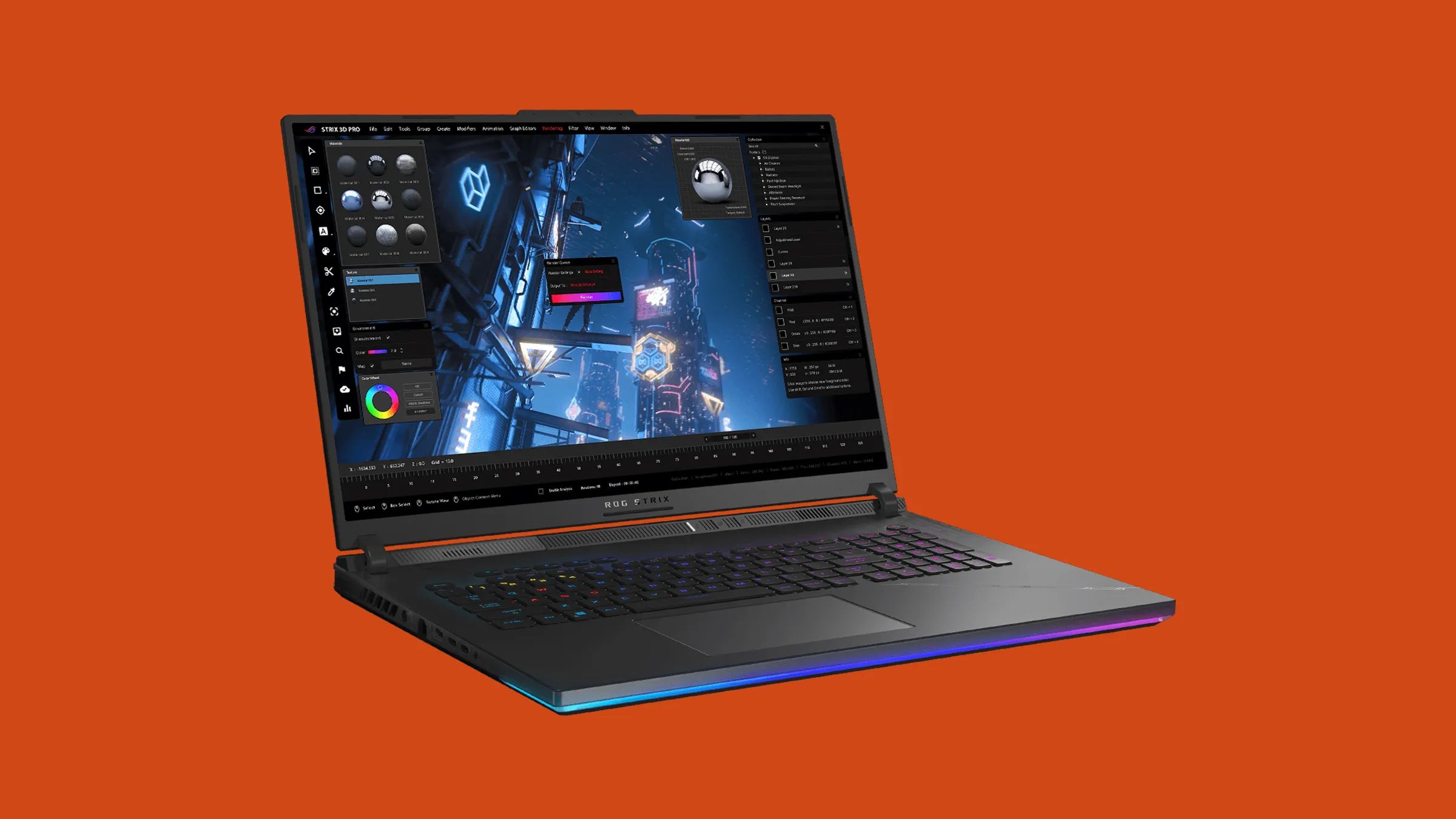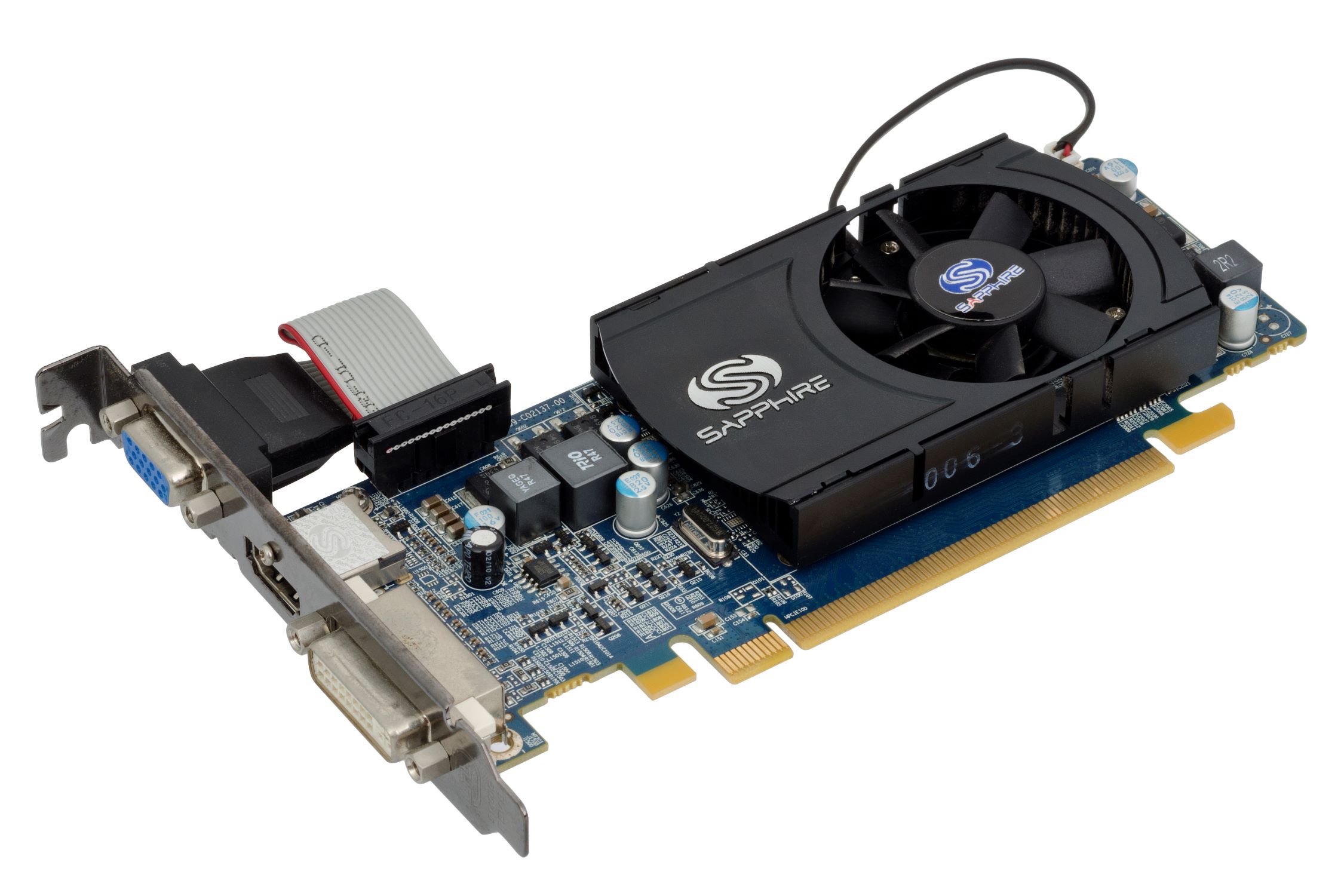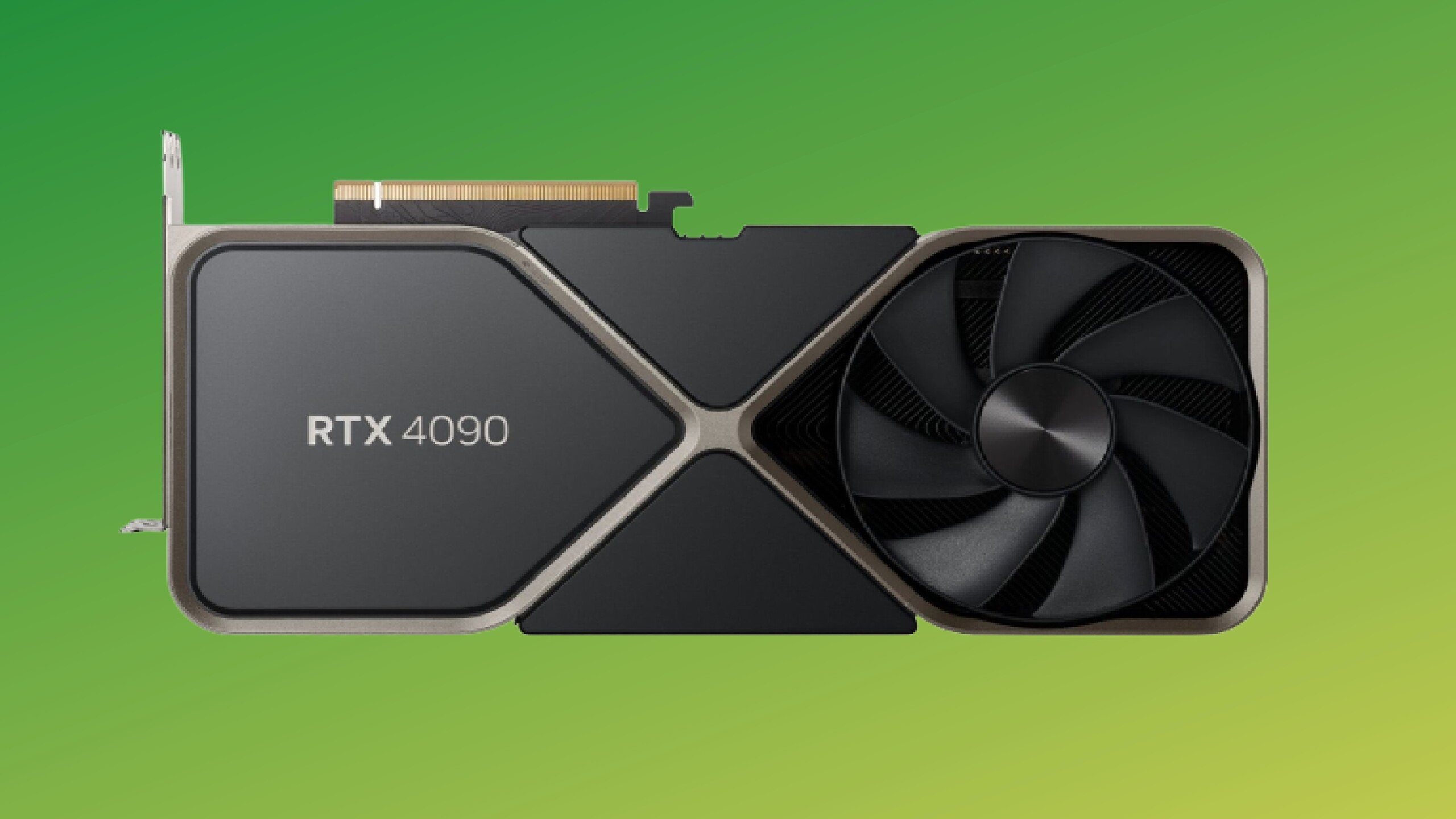Introduction
Welcome to the world of graphics processing units (GPUs). These powerful devices have become a vital component in modern-day computers, enabling smooth and efficient rendering of graphics, video editing, and gaming experiences. However, if you’ve been keeping an eye on the GPU market, you might have noticed a disturbing trend: skyrocketing prices.
For tech enthusiasts and avid gamers, the soaring costs of high-performance graphics cards have been a cause for frustration and disappointment. But why exactly are GPU prices surging, and when can we expect them to come down to more reasonable levels?
Several factors contribute to the current state of GPU prices, making it important to analyze the situation from various angles. In this article, we will delve into the factors influencing GPU prices and explore the potential future trends in the market.
Understanding the dynamics behind GPU prices requires us to consider both demand and supply factors. The GPU market is highly influenced by consumer demand, which, in turn, is driven by various factors like gaming trends, advancements in virtual reality (VR) technology, and digital content creation. Additionally, supply-side dynamics, such as production capacities, component shortages, and manufacturing costs, play a crucial role in determining the final retail prices of GPUs.
Another significant factor impacting GPU prices is the rise of cryptocurrency mining. The emergence of cryptocurrencies like Bitcoin and Ethereum has led to a surge in demand for powerful GPUs to mine these digital currencies. As miners compete for computational power, the demand for high-performance GPUs increases, causing a shortage in supply and subsequent price hikes.
Technological advancements also play a role in influencing GPU prices. As new generations of GPUs are released, boasting improved performance and efficiency, the prices of older models tend to decrease. However, the introduction of cutting-edge technologies, such as ray tracing and artificial intelligence, can push prices up for the latest GPU models equipped with these features.
Global events, including trade disputes and economic uncertainties, can significantly impact GPU prices. Tariffs imposed on imported GPUs, for example, can raise manufacturing costs and lead to higher retail prices. Additionally, fluctuations in currency exchange rates and disruptions in the supply chain can contribute to price fluctuations in the GPU market.
While the current state of GPU prices may be disheartening for consumers, it is important to consider potential future trends. Technological advancements, improved production capacities, and the stabilization of cryptocurrency markets may bring relief to GPU enthusiasts in the long run. As the demand-supply equilibrium is restored and competition intensifies, we can anticipate more affordable GPU options becoming available.
In the following sections, we will explore the various factors affecting GPU prices in more detail and analyze their potential impact on the future of the market.
Factors Affecting GPU Prices
There are several factors that contribute to the fluctuation of GPU prices in the market. Understanding these factors can provide insight into the reasons behind the current high prices and help predict future trends. Let’s delve into the key factors influencing GPU prices:
1. Demand and Supply Dynamics: The demand for GPUs is driven by a wide range of consumers, including gamers, content creators, and professionals in fields like graphic design and video editing. When demand exceeds supply, GPU prices tend to rise due to the scarcity of available units. Likewise, an oversupply can result in lower prices as companies try to clear excess inventory.
2. Cryptocurrency Mining: The surge in popularity of cryptocurrency mining, particularly for currencies like Bitcoin and Ethereum, has had a significant impact on GPU prices. Miners require powerful GPUs to solve complex mathematical algorithms and earn digital currencies. As more miners enter the market, the demand for GPUs increases, causing prices to rise. The volatility of cryptocurrency markets can also influence GPU prices, as fluctuations in the value of digital currencies can affect miners’ profitability and their willingness to invest in new GPUs.
3. Technological Advancements: The continuous evolution of GPU technology plays a vital role in price fluctuations. When manufacturers release new generations of GPUs with improved performance, higher efficiency, and new features like ray tracing and artificial intelligence capabilities, consumers tend to gravitate towards these latest models. This increased demand for newer GPUs can contribute to higher prices, especially during the initial release period, as manufacturers capitalize on the demand for cutting-edge technology.
4. Component Shortages: GPU production relies on a multitude of components, such as memory chips and transistors. Shortages or disruptions in the supply chain of these components can lead to higher manufacturing costs, resulting in increased GPU prices. Global events, natural disasters, and unexpected shifts in industrial production can all cause component shortages, affecting the availability and affordability of GPUs.
5. Global Events and Economic Factors: The global economy and geopolitical events can have a significant impact on GPU prices. Tariffs imposed on imported GPUs can increase manufacturing costs, leading to higher retail prices for consumers. Currency exchange rate fluctuations, trade disputes, and economic uncertainties can also impact GPU prices, as they influence the cost of production and supply chain logistics.
By considering these factors, it becomes clear that GPU prices are influenced by complex interactions between demand, supply, technology, and global events. While the current state of high GPU prices may cause frustration for consumers, understanding these factors provides valuable insights into the market dynamics and hints at the potential future trends. In the following sections, we will explore the impact of cryptocurrency mining, technological advancements, and global events in more detail.
Demand and Supply Dynamics in the GPU Market
The GPU market operates on a complex interplay between demand and supply dynamics. Understanding the factors that influence consumer demand and manufacturing supply can shed light on the fluctuation of GPU prices in the market.
Consumer Demand: The demand for GPUs stems from various segments of the market, including avid gamers, content creators, and professionals in the graphic design and video editing industries. Gaming trends and the release of highly-anticipated titles often drive demand for high-performance GPUs. Furthermore, the growing popularity of streaming platforms and the rise of eSports have accelerated the demand for reliable graphics card solutions. Additionally, the increasing importance of virtual reality (VR) and augmented reality (AR) technologies has led to a surge in demand for GPUs capable of delivering immersive experiences. Lastly, the demand for GPUs in fields like scientific research, artificial intelligence, and cryptocurrency mining continues to grow.
Manufacturing Supply: The supply side of the GPU market is influenced by various factors, including manufacturing capacities, component availability, and production costs. Leading GPU manufacturers invest significant resources in research and development to produce cutting-edge GPUs with improved performance and energy efficiency. However, the production of GPUs relies on a complex supply chain that includes critical components like memory chips, transistors, and cooling systems. Shortages or disruptions in the availability of these components can lead to delays in manufacturing, limiting the supply of GPUs in the market.
When demand exceeds supply, GPU prices tend to rise due to the scarcity of available units. On the other hand, an oversupply of GPUs can result in lower prices as manufacturers and retailers may offer discounts and promotions to clear excess inventory. It’s important to note that factors like brand reputation, product availability, and consumer preferences also influence the demand-supply dynamics in the GPU market.
Moreover, GPU manufacturers often release different models targeting various price points and performance tiers to cater to the diverse needs and budgets of consumers. These variations in product offerings allow manufacturers to cater to both high-end enthusiasts seeking top-of-the-line GPUs and budget-conscious consumers looking for more affordable options.
Understanding the demand and supply dynamics is crucial for consumers and manufacturers alike. Consumers need to consider factors like gaming requirements, budget constraints, and future-proofing when deciding to invest in a GPU, while manufacturers must assess market trends and consumer preferences to optimize production and pricing strategies.
By analyzing the demand and supply dynamics of the GPU market, we can gain insight into the pricing fluctuations and availability of GPUs. In the following sections, we will explore other factors, such as the impact of cryptocurrency mining, technological advancements, and global events, which contribute to the volatility of GPU prices.
Impact of Cryptocurrency Mining on GPU Prices
One of the significant factors contributing to the surge in GPU prices is the popularity of cryptocurrency mining. Cryptocurrencies like Bitcoin and Ethereum rely on computational power to solve complex algorithms and validate transactions on their respective networks. As a result, miners require powerful GPUs to perform these calculations efficiently.
The increasing demand for GPUs from cryptocurrency miners has had a significant impact on the market. Miners often purchase multiple GPUs and create mining rigs to maximize their computational power and mining efficiency. This high demand for GPUs has created a shortage in the supply, leading to price hikes and availability issues for consumers.
The impact of cryptocurrency mining on GPU prices can be attributed to various factors:
1. Increased Demand: As the popularity of cryptocurrencies continues to rise, so does the demand for GPUs. Miners are continually searching for high-performance graphics cards that offer optimal mining capabilities. The competition for these GPUs drives up demand, resulting in increased prices.
2. GPU Scarcity: The demand for GPUs from cryptocurrency miners often outpaces the available supply. GPU manufacturers may struggle to meet the increasing demand, as they need to balance their production capacities between consumer GPUs and specialized mining hardware. This scarcity of GPUs contributes to the higher prices in the market.
3. Profitability Factors: The profitability of cryptocurrency mining plays a role in determining the demand for GPUs. When the value of cryptocurrencies increases, mining becomes more lucrative, attracting more miners to enter the market. This influx of miners creates additional demand for GPUs, driving up prices.
4. Product Shortages: Cryptocurrency mining also impacts the availability of GPUs in the market. Manufacturers may allocate a portion of their production to produce specialized mining hardware, which further reduces the number of GPUs available for regular consumers. As a result, the limited supply intensifies competition among consumers, leading to higher prices.
While the impact of cryptocurrency mining on GPU prices is evident, it is worth noting that the market is subject to volatility. Cryptocurrency prices can fluctuate drastically, affecting the profitability of mining operations. When the crypto market experiences a downturn, miners may reduce their GPU purchases, allowing the GPU market to stabilize and potentially lead to a decline in prices.
Furthermore, GPU manufacturers and retailers are working on strategies to address the issue. Some manufacturers have introduced specialized mining cards, designed exclusively for cryptocurrency mining, to meet the demand without affecting the availability of consumer-grade GPUs. Additionally, retail partners are implementing measures to ensure fair distribution and combat bulk purchases by miners.
Overall, the impact of cryptocurrency mining on GPU prices cannot be ignored. The high demand, coupled with limited supply, has contributed to the surge in prices. However, the market is dynamic, and various factors like cryptocurrency market trends and industry initiatives may help stabilize GPU prices in the future.
Technological Advancements Influencing GPU Prices
Technological advancements play a significant role in influencing GPU prices in the market. As new generations of GPUs are released, boasting improved performance, energy efficiency, and innovative features, consumers are eager to upgrade their graphics cards to experience the latest advancements. However, these advancements can also affect the pricing of GPUs. Let’s explore how technological advancements influence GPU prices:
1. Performance Improvements: Every new generation of GPUs brings with it increased performance capabilities. Higher clock speeds, more powerful processors, and improved memory bandwidth allow for smoother and more immersive gaming experiences. However, these performance enhancements often come at a price. Manufacturers invest heavily in research and development to create cutting-edge GPU architectures, resulting in higher manufacturing costs that are passed on to consumers.
2. Energy Efficiency: With each new release, GPU manufacturers strive to improve energy efficiency. Lower power consumption not only benefits the environment but also reduces electricity costs for consumers. However, implementing energy-efficient technologies often requires additional investment in R&D and the use of more expensive components, which can contribute to higher GPU prices.
3. Innovative Features: Technological advancements often introduce new features that enhance the capabilities of GPUs. Features like ray tracing, which simulates realistic lighting and shadows in real-time, and artificial intelligence (AI) capabilities bring a new level of realism and immersion to gaming and other graphics-intensive tasks. GPUs equipped with these advanced features tend to carry a premium price, reflecting the investment required for their development and implementation.
4. Obsolescence of Older Models: As newer and more powerful GPU models are released, older models gradually become outdated. This creates a demand for the latest technology, which drives up prices for the newest GPUs. Additionally, limited supply of older models may result in higher prices for those who are unable to upgrade immediately, creating a dichotomy in the market where prices for both new and older GPU models can increase.
5. Cost of Manufacturing: The production costs associated with manufacturing GPUs is influenced by technological advancements. The use of more advanced and intricate manufacturing processes, such as smaller transistors and more complex circuitry, can increase production costs. These costs are then reflected in the final retail prices of GPUs.
It’s important to note that technological advancements are not solely responsible for increasing GPU prices. Demand and supply factors, component availability, and market competition also play significant roles. As technologies mature and become more widespread, economies of scale can lead to cost reductions and make previously premium features more affordable for consumers.
To conclude, technological advancements significantly influence GPU prices. Improved performance, energy efficiency, and innovative features drive up manufacturing costs, resulting in higher retail prices for consumers. However, as these technologies become more pervasive and the market evolves, we can anticipate greater accessibility to advanced features at more affordable price points in the future.
Effects of Global Events on GPU Prices
The GPU market is not immune to the impact of global events, as external factors can influence GPU prices to a significant extent. These events can include economic shifts, political developments, and unforeseen circumstances that affect the supply chain and manufacturing costs. Understanding the effects of such events is essential in comprehending the volatility of GPU prices in the market.
1. Trade Disputes and Tariffs: Global trade disputes and the imposition of tariffs on imported goods can have a direct impact on GPU prices. Tariffs increase the cost of importing GPUs, which in turn raises manufacturing costs. These additional expenses are typically passed on to the consumers, amplifying the retail price of GPUs. Therefore, changes in trade policies and tariffs can significantly affect the affordability and availability of GPUs in different regions.
2. Currency Exchange Rates: Fluctuations in currency exchange rates can also influence GPU prices. As the values of currencies change relative to one another, the cost of manufacturing and importing GPUs can fluctuate. A weaker currency can lead to higher manufacturing costs or increased prices for imported GPUs. These currency exchange rate fluctuations can result in price volatility and impact the affordability of GPUs in different countries.
3. Component Shortages and Supply Chain Disruptions: Global events, natural disasters, and unexpected circumstances can disrupt the supply chain of GPU manufacturing. Component shortages may occur if suppliers face issues in production or transportation, affecting the availability and cost of critical GPU components. These disruptions can lead to higher manufacturing costs, which are passed on to the consumers by increasing GPU prices.
4. Economic Uncertainties: Economic uncertainties, such as recessions, financial crises, or stock market fluctuations, can impact consumer behavior and purchasing power. During economic downturns, consumers may be more cautious with their spending and prioritize essential items over discretionary purchases like GPUs. This can lead to decreased demand for GPUs, causing manufacturers to adjust their pricing strategies to remain competitive, potentially resulting in lower GPU prices.
5. Global Pandemics: Global pandemics, like the COVID-19 crisis, can have far-reaching consequences for the GPU market. Supply chain disruptions, factory closures, and fluctuations in consumer demand can all impact GPU prices. The COVID-19 pandemic, for example, led to disrupted manufacturing operations, component shortages, and increased demand for remote work and entertainment, driving up GPU prices due to supply and demand imbalances.
These global events highlight the interconnected nature of the GPU market with the broader economic and political landscape. While it may be challenging to predict the exact impact of these events on GPU prices, being aware of their potential influence can help consumers, manufacturers, and industry experts navigate the market effectively.
It is important to remember that GPU prices are subject to various factors, and global events are just one piece of the puzzle. Consumer demand, technological advancements, and other market forces also contribute to the overall pricing dynamics in the GPU market. By monitoring these events and their implications, consumers can make informed decisions about when and how to purchase GPUs, considering both external influences and their specific needs.
Potential Future Trends in GPU Prices
Understanding the potential future trends in GPU prices requires considering various factors such as technological advancements, market competition, and external influences. While it is difficult to predict with certainty how GPU prices will evolve, several trends can provide insights into what we might expect in the future.
1. Technological Advancements: The continuous evolution of GPU technology is likely to impact future prices. As manufacturers introduce new generations of GPUs with improved performance, efficiency, and innovative features, we can anticipate initial higher prices for these cutting-edge models. However, as time progresses and these technologies become more widespread, economies of scale may lead to cost reductions and more affordable pricing for the latest GPU models.
2. Stabilization of Crypto Mining: The cryptocurrency market, which has influenced GPU prices in recent years, remains prone to volatility. However, as the market matures and becomes more regulated, we may see a stabilization of cryptocurrency mining demand. This could result in a more balanced supply and demand scenario for GPUs, potentially leading to more stable pricing in the future.
3. Increased Production Capacities: GPU manufacturers are continually looking to optimize their production capabilities to meet the growing demand. This may include expanding manufacturing facilities or investing in new production technologies. With increased production capacities, manufacturers can potentially address the supply-demand imbalance, which could lead to more competitive pricing and increased availability of GPUs.
4. Growing Competition: The GPU market is highly competitive, with multiple manufacturers vying for market share. This competition could drive down prices as manufacturers strive to attract consumers with more affordable options or competitive pricing strategies. As new players enter the market and existing ones innovate, this competition may lead to more accessible and reasonably priced GPUs for consumers.
5. Consumer Preferences: Consumer preferences play a vital role in shaping the GPU market. The increasing demand for gaming, virtual reality, and content creation continues to drive GPU sales. Manufacturers are likely to monitor consumer preferences closely and adapt their product offerings to cater to evolving needs. This attention to consumer preferences may influence pricing strategies and the availability of different GPU models at various price points.
6. Global Economic Factors: Global economic factors, such as trade policies, currency exchange rates, and economic stability, can also influence GPU prices in the future. Changes in these factors can impact manufacturing costs, import/export expenses, and consumer purchasing power, potentially leading to fluctuations in GPU prices.
While these trends provide insights into potential future scenarios, it is crucial to note that the GPU market is dynamic and influenced by numerous factors. Accurately predicting future GPU prices is challenging, and unexpected developments can quickly change the pricing landscape. Staying informed about market trends, technological advancements, and global events will help consumers make educated decisions when considering GPU purchases.
Conclusion
The GPU market is a dynamic landscape influenced by various factors, including demand and supply dynamics, cryptocurrency mining, technological advancements, global events, and future trends. Understanding these factors provides valuable insights into the pricing fluctuations and availability of GPUs.
Consumer demand plays a crucial role in shaping GPU prices, with gaming trends, virtual reality, and content creation driving the need for high-performance graphics cards. On the supply side, factors like manufacturing capacities, component availability, and production costs influence the final retail prices of GPUs.
< p>The rise of cryptocurrency mining has significantly impacted GPU prices, creating high demand and scarcity. Miners’ need for computational power has led to GPU shortages and subsequent price hikes. However, as the cryptocurrency market evolves and stabilizes, we can anticipate a potential balance in supply and demand, potentially leading to more stable GPU prices in the future.
Technological advancements have a direct impact on GPU prices, with improved performance, energy efficiency, and innovative features often driving up manufacturing costs. However, economies of scale and market competition may eventually lead to more accessible options and affordable pricing for consumers.
Global events, such as trade disputes, tariffs, currency exchange rate fluctuations, component shortages, and economic uncertainties, can also affect GPU prices. These external influences can disrupt the supply chain, increase costs, and impact consumer purchasing power, leading to pricing fluctuations in the GPU market.
Looking ahead, potential future trends in GPU prices include technological advancements, stabilization of cryptocurrency mining, increased production capacities, growing competition, consumer preferences, and global economic factors. These trends can shape the future pricing landscape for GPUs, but it is essential to recognize that unforeseen developments can quickly alter the market dynamics.
In conclusion, understanding the various factors affecting GPU prices is vital for consumers, manufacturers, and industry experts. By staying informed about market trends, technological advancements, and global events, consumers can make informed decisions when considering GPU purchases. Manufacturers can adapt their production and pricing strategies to meet consumer demands, while industry experts can anticipate and analyze future trends in the ever-evolving GPU market.







